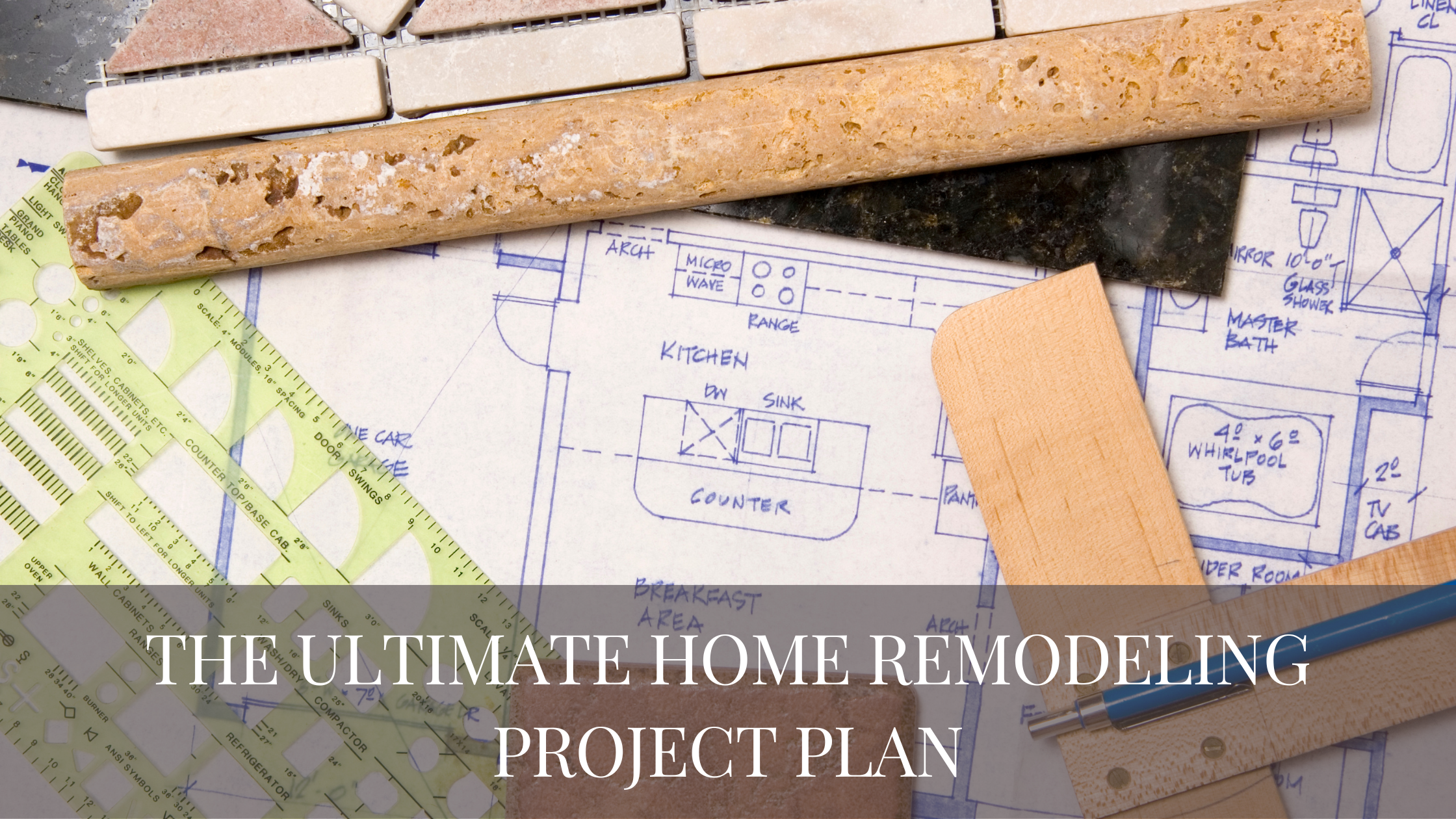The Unexpected Shield Against Inflation: Owning Your Home

Inflation is an economic force that can put a dent in your savings and leave you scrambling to keep up. For those who are renting, inflation can lead to higher monthly payments and a lower quality of living. However, there is a way to shield yourself against inflation, and that way is through homeownership. In this blog post, we will discuss how owning a home helps protect against inflation and why it is a smart financial decision.
Understanding How Homeownership Shields from Rising Costs
When inflation rises, almost everything becomes more expensive, from gas and groceries to housing costs. However, as a homeowner, you have a bit more control over the effects of inflation. For example, a homeowner’s mortgage payment remains the same each month, regardless of inflation, as long as you have a fixed-rate mortgage. This means that your mortgage payment won’t increase with inflation, which provides an added measure of financial stability during turbulent economic times. Additionally, when you own a home, you have the freedom to invest in home renovations that can increase your home’s value. This can help protect against inflation and provide a sense of security, knowing that you’re invested in a tangible asset.
The Benefits of a Fixed-Rate Mortgage Amid Inflation
When you have a fixed-rate mortgage, your monthly mortgage payment stays the same, regardless of inflation. This is because your interest rate is locked in when you first purchase your home. This provides an added measure of financial stability during inflationary periods, as you won’t have to worry about your monthly payment increasing. Additionally, inflation can lead to higher interest rates on new mortgages, making it more difficult to purchase a home. If you have a fixed-rate mortgage, you won’t be affected by these rising interest rates and can continue to enjoy the benefits of homeownership.
The Challenges Renters Face During Inflation
For individuals who rent, the consequences of inflation can noticeably affect their standard of living and economic steadiness. Rental costs may surge, posing a challenge to meeting essential living expenses. Renters are also at a disadvantage as they don’t hold any authority over the property’s worth, thus missing out on the stability that homeowners experience. Landlords hold the power to increase the rent whenever they wish, potentially leading to monetary instability.
The Stability and Security of Owning a Home
With homeownership comes control over your property’s value, allowing you to enhance its worth with desired renovations. Plus, owning a home acts as a safeguard against inflation as property values rise over time. Long-term permanence and control over your living situation add to the peace of mind that comes with owning a home. Avoid worrying about rent hikes or changing lease terms as you take charge of your own living circumstances.
Ready for More Stability?
Owning a home provides many benefits, not the least of which is protection against rising costs accompanied by periods of inflation. The security offered by being a homeowner will give you peace of mind that renting could never provide, and there are plenty of resources available, so don’t be afraid to ask for help!
If you’re ready to embark on your journey toward homeownership, contact me today. I’m confident you’ll appreciate the unparalleled stability and security that comes with owning a home. So why not get started today on your new journey toward personal financial success? It all starts with taking those first few steps toward homeownership!
The Ultimate Home Remodeling Project Plan: A Comprehensive Guide

Are you considering taking on a home remodeling project? Whether your goal is to completely transform an outdated kitchen or simply spruce up that tired-looking living room, the prospect of tackling even a small renovation can be daunting. You know it’s important to research and plan carefully for your project, but where do you start? In this post, we’ll show you how to put together the ultimate remodeling project plan – one that will help ensure both success and satisfaction in the end!
Pre-Planning Phase
Before diving into any remodeling project, it’s crucial to lay the groundwork. Start by defining your goals and objectives. What do you hope to achieve with your renovation? Next, set a realistic budget to ensure you’re prepared financially. Take the time to research and gather inspiration, flipping through magazines or creating Pinterest boards. Assess your home’s current condition and determine the scope of the project. Finally, create a timeline to keep your project on track.
Design and Concept Development
To bring your remodeling dreams to life, it’s essential to enlist the help of professionals. Hire an architect or designer who can understand your vision and work within your budget. Collaborate with them to explore different design options, develop a concept, and create a detailed floor plan. This phase also involves selecting materials, finishes, and fixtures that align with your style and preferences.
Obtaining Permits and Approvals
Before swinging the hammers, you need to navigate the necessary paperwork. Familiarize yourself with local building codes and regulations. Apply for permits and licenses, and submit the required documentation. Don’t worry; it may seem daunting, but your contractor can guide you through the process and ensure compliance.
Hiring Contractors and Subcontractors
Finding reliable professionals is crucial for a successful remodeling project. Seek recommendations, request multiple bids, and thoroughly check references and credentials. Once you’ve selected your contractors, negotiate contracts and establish a clear communication plan to keep everyone on the same page.
Demolition and Site Preparation
Now the fun begins! Prepare the site for construction, ensuring it’s safe and ready for the upcoming changes. Demolish existing structures cautiously and remove debris and waste. Make sure you’ve secured the necessary utilities and services, so you won’t be left in the dark during the renovation.
Construction Phase
With the site prepped and permits in hand, it’s time for the construction phase. Work closely with your general contractor, keeping a watchful eye on progress and quality. Remember, changes and adjustments may arise, so maintain open communication to address any unexpected issues promptly. Safety is paramount, so ensure the working environment meets all regulations.
Interior Design and Finishing Touches
Now comes the part where you see your vision take shape. Select paint colors, wallpapers, and textures that reflect your style. Choose furniture, lighting, and accessories to create a cozy and inviting space. Install flooring, cabinetry, and countertops with care, paying attention to every detail. Finally, add those personal decorative elements that make your house truly feel like a home.
Final Inspections and Approvals
We’re nearing the finish line! Schedule inspections at key project milestones to ensure everything meets building codes and regulations. Address any issues or deficiencies that arise, working closely with your contractors. Once you’ve obtained all the necessary approvals and certificates, you’re almost there!
Project Completion and Cleanup
Take a deep breath because you’ve made it! Review the completed project and conduct a final walkthrough with your contractors. Attend to any remaining tasks or touch-ups to ensure everything is in top shape. Lastly, give your renovated space a thorough cleaning and organization.
Get Started on Your Project
With a comprehensive understanding of how to plan your home project, you can be confident in creating and upgrading your living space.
It’s important to remember that remodeling takes time, so set realistic deadlines and keep good records. Be sure to make safety-related decisions along the way, such as working with contractors and following permit guidelines.
Ultimately, you are the one who will determine the outcome of this project—just remember to stay organized and plan for every phase.
No matter how big or small the project is, by taking each step carefully and thoughtfully, you are sure to achieve your ideal result and create a home that is uniquely yours!
Stop Being Overwhelmed By Clutter

Everyone wants to live in a clean, organized home. However, the approach to organizing varies from person to person. What works for some may not work for others. Your personality type plays a critical role in determining what organizational approach suits you best. Research has shown that individual personalities play a crucial role in the choices we make. We have identified five personality types that influence home organization. In this blog post, we will give you some organizational tips for your specific personality type to help you get organized and stay that way.
Openness Personality Type
If you have a creative personality, choose personal, organizational systems that allow individual expression. Instead of traditional storage solutions, choose colorful and unique containers to store your items. Personalized storage solutions like custom-made shelves or hand-woven baskets are perfect for this personality type. Also, consider using labels that describe your unique items for easy access, and you won’t have to search for that item for hours.
Conscientiousness Personality Type
For those who are detail-oriented and love following specific plans, detailed and specific organization methods with time-tested systems provide the best results. Invest in plastic bins to organize your items, as they come in different sizes and can easily fit into tight spaces. Get drawer organizers to keep smaller items like jewelry, stationery, and make-up neatly arranged so you know where to look for things at all times.
Extroversion Personality Type
For extroverted folks, colorful and visual storage solutions are a great bet — think easy-to-navigate items with color-coded systems and recognizable containers. Items you don’t need as often can go up high, while frequently used pieces can be easily accessed on lower shelves. Be sure to give your closet an organization overhaul, grouping your clothes by color or season for stress-free selection.
Agreeableness Personality Type
If your personality type is more agreeable, flexible options tailored to the needs of the whole family will work for you. If you have kids, you can invest in colorful containers to store their toys or games and label them. Get storage solutions that the children can easily use, so you don’t have to manage everything by yourself. If you have a spouse or roommate, share the organization’s responsibilities, and set aside some time so that everyone can chip in and organize together.
Neuroticism Personality Type
You’re someone who worries and overthinks everything? Opt for a structured system with an emphasis on problem-solving to bring some peace of mind to your life. Get a planner or digital organizing app that helps you schedule your tasks and responsibilities. Ensure you manage time well for each task, and you won’t be too bogged down by the tasks that require completion.
Time to Get Your Home Organized
By figuring out your personality type, you can come up with a home organization plan that suits you perfectly. Our tips for each type will make organizing, dare we say it, practical and (gasp) enjoyable. Whether you’re outgoing, anxious, or the sweetest person in the world, your home should showcase your uniqueness and personality. So why wait? Start organizing today, and let your home become your sanctuary!
7 Insider Secrets of Home Staging: Transforming Your Space for Maximum Impact

Selling your home can be an exciting but challenging endeavor. To attract potential buyers and secure a quick sale at a desirable price, home staging plays a crucial role. In this article, we’ll reveal seven insider secrets of home staging that will help you transform your space into a buyer’s dream.
Secret 1: Understanding the Buyer’s Perspective
When staging your home, it’s essential to view it through the eyes of potential buyers. Creating an emotional connection is key. Highlight your home’s best features, such as stunning architectural details or breathtaking views. Remember to also depersonalize the space by removing personal belongings and neutralizing the decor to allow buyers to envision themselves living there.
Secret 2: Maximizing Curb Appeal
First impressions matter, and the exterior of your home sets the tone. Enhance curb appeal by giving your home a fresh coat of paint, maintaining a well-manicured lawn and garden, and adding inviting touches to the entryway. A charming exterior will entice buyers to explore further.
Secret 3: Decluttering and Depersonalizing
Clutter can make your home feel cramped and uninviting. To create an open and spacious atmosphere, declutter by removing excess furniture and personal belongings. Pack away family photographs and personal memorabilia to allow buyers to imagine their own lives in the space.
Secret 4: Strategic Furniture Placement
The way you arrange furniture can greatly impact the flow and functionality of each room. Arrange your furniture to create a natural flow and highlight the purpose of each space. Use appropriate scale and proportions to make rooms feel balanced and visually appealing. Showcasing potential uses for different areas will help buyers see the full potential of your home.
Secret 5: Let There Be Light
Lighting can make a significant difference in how your home is perceived. Maximize natural light by removing heavy curtains and blinds and opening up windows. Enhance artificial lighting with well-placed lamps and fixtures to create a bright and welcoming atmosphere. A well-lit home feels more inviting and spacious.
Secret 6: Creating Inviting and Functional Spaces
To make your home more appealing, use staging techniques to define specific areas and showcase the functionality of each room. Create cozy reading nooks, inviting dining spaces, and versatile home offices. Incorporate trendy design elements that appeal to a wide range of buyers, such as statement rugs or stylish accent pieces.
Secret 7: Adding the Final Touches
The finishing touches can make all the difference. Incorporate tasteful accessories and décor to add personality and warmth to each room. Use pops of color to create visual interest and draw attention to key areas. By styling the space in a cohesive and visually pleasing manner, you’ll leave a lasting impression on potential buyers.
Time to Stage Your Home?
By implementing these seven insider secrets of home staging, you’ll significantly increase your chances of selling your home quickly and at a desirable price. Remember to view your home from the buyer’s perspective, maximize curb appeal, declutter and depersonalize, strategically place furniture, optimize lighting, create inviting spaces, and add the final touches. With these tips in mind, you’ll be well on your way to transforming your space into a buyer’s dream. Good luck with your home staging journey!
Unleash the Potential of Your Home

Selling your home doesn’t have to be a nerve-wracking ordeal. Say goodbye to the days of uncertainty and second-guessing. What if we told you there’s a secret recipe to make your property irresistible to potential buyers? Brace yourself as we reveal the game-changing features that will skyrocket your home’s appeal and command top dollar in the market.
Discover the Power Features That Propel Your Home’s Sale!
Today’s buyers are in search of more than just four walls and a roof. They want a lifestyle upgrade, a place that exudes functionality and efficiency. Brace yourself for the key features that will transform your selling experience:
- Doorbell Camera (+5.1 days sold faster): Give buyers peace of mind and make your home a secure sanctuary that stands out among the rest.
- Soapstone (+3.8 days sold faster): Elevate your kitchen or bathroom with soapstone countertops that boast elegance, uniqueness, and a touch of luxury.
- Open Shelving (+3.5 days sold faster): Create an open and airy ambiance that showcases your home’s storage potential and modern design aesthetic.
- Heat Pump (+3.0 days sold faster): Watch buyers fall head over heels for energy efficiency, lower utility bills, and ultimate comfort with a heat pump.
- Fenced Backyard (+2.9 days sold faster): Unlock the potential of an outdoor oasis with a private and secure backyard, perfect for families and furry friends.
- Mid-Century (+2.8 days sold faster): Transport buyers to a timeless era with design elements that exude sophistication and charm for a broad demographic.
- Hardwood Floors (+2.4 days sold faster): Step up your home’s elegance with stunning hardwood floors that add warmth and durability, leaving a lasting impression.
- Walkability (+2.4 days sold faster): Enrich your buyers’ lives by offering a home within strolling distance of schools, restaurants, and parks—a true game-changer!
- Shiplap (+2.3 days sold faster): Unleash the power of trendy wall treatments that add character, texture, and a touch of chic to your home.
- Gas Furnace (+2.0 days sold faster): Ditch the old and embrace energy efficiency with a sought-after gas furnace that pampers buyers’ wallets and keeps them cozy.
Embark on the Journey to a Higher Selling Price!
Are you ready to discover the secret ingredients that will fetch you a higher selling price? Buckle up and get ready to set your home’s value ablaze with these irresistible features:
- Steam Oven (+5.3% value added): Ignite the passion of home cooks and food enthusiasts with a luxury steam oven that turns your kitchen into a culinary paradise.
- Pizza Oven (+3.7% value added): Unleash the entertainer in you and captivate buyers with a sizzling pizza oven that turns your outdoor space into a gathering haven.
- Professional Appliances (+3.6% value added): Create a gourmet experience right at home with high-quality, professional-grade appliances that make buyers’ hearts skip a beat.
- Terrazzo (+2.6% value added): Elevate your home’s design to new heights with striking and durable terrazzo flooring that adds a touch of opulence and value.
- She Shed (+2.5% value added): Make dreams come true for buyers in need of a dedicated space for hobbies and relaxation with the rising trend of She Sheds.
- Smart Home System (+2.4% value added): Wow buyers with a futuristic abode that boasts automated technology, from voice-controlled devices to smart lighting systems.
- Solar Panel Array (+2.3% value added): Embrace sustainability and energy savings with solar panels that make your home a compelling choice for eco-conscious buyers.
- Quartz (+2.4% value added): Leave buyers swooning over the sleek and stylish appearance of quartz countertops, offering durability and low-maintenance luxury.
- Modern Farmhouse (+2.4% value added): Blend contemporary design with rustic charm to capture the hearts of buyers who crave the perfect fusion of old and new.
- Hurricane/Storm Shutters (+2.3% value added): Show buyers you care about their safety and peace of mind with the added protection of hurricane or storm shutters.
- Mid-Century (+2.3% value added): Transport buyers to an era of unmatched style with the timeless appeal of mid-century design that commands higher prices.
Caution: Beware of Value Reducers!
While we aim to help you unlock your home’s full potential, it’s essential to be aware of potential stumbling blocks. Keep an eye out for these features that may have a negative impact on your home’s market value:
Tile Countertops: Avoid tile countertops, as they can be perceived as outdated or less durable compared to other materials.The homes with tile countertops saw an average of 1.1% reduction in their value
Laminate Floors or Countertops: Steer clear of laminate surfaces, as they are often seen as less desirable and may require replacement in the near future.
Walk-In Closet: Surprisingly, walk-in closets can drop the value by about 0.7%. This may be due to the fact that some buyers prefer larger bedrooms or allocate space differently.
Ready to Unleash the Full Potential of Your Home?
Don’t let the challenges of selling your home overshadow your dreams. An an experienced real estate agent, I am here to guide you every step of the way. Whether you need advice on repairs, remodeling, or maximizing your home’s market value, I’ve got your back. Embark on a successful selling journey with confidence.
Are you ready to embark on this exciting journey? Contact me today, and let’s make your selling dreams a reality!
Creating Serenity at Home: Tapping Into Your 5 Senses

In our fast-paced world, finding peace and tranquility in our living spaces is more important than ever. A serene home environment can provide a sanctuary where we can unwind, recharge, and find solace. By engaging our five senses—sight, hearing, smell, taste, and touch—we can create a harmonious atmosphere that nurtures our well-being.
The 5 Senses And Their Impact On Peace At Home
Our senses play a crucial role in how we experience the world around us. When harnessed intentionally, they can transform our homes into havens of tranquility. Sight, hearing, smell, taste, and touch all contribute to our overall sense of well-being. Let’s delve into each sense and discover how to leverage it to create a peaceful ambiance at home.
Sight: Creating A Visually Soothing Environment
Visual aesthetics have a profound impact on our mood and stress levels. By incorporating calming visual elements, we can foster a sense of tranquility in our living spaces. Consider decluttering, using a soothing color palette, and integrating natural elements such as plants and natural light to create an environment that promotes relaxation.
Hearing: Cultivating A Serene Soundscape
Sound can profoundly influence our emotions and relaxation. To create a peaceful auditory environment, eliminate or minimize disruptive noises, embrace soothing sounds like gentle music or nature sounds, and strategically place soft furnishings to absorb excess noise.
Smell: Harnessing The Power Of Aromatherapy
Scents have the remarkable ability to evoke emotions and trigger relaxation. By incorporating aromatherapy into your home, you can create a serene atmosphere. Experiment with essential oils, scented candles, or natural fragrances like lavender or eucalyptus to infuse your space with a calming aroma.
Taste: Nourishing The Body And Soul
Food and comfort are deeply intertwined. By practicing mindful eating and cultivating a space that honors nourishment, you can enhance the peacefulness of your home. Designate a cozy dining area, experiment with soothing herbal teas, and create a kitchen that encourages mindful cooking and eating experiences.
Touch: Embracing Tactile Comfort
Physical touch plays a vital role in creating a calming environment. Incorporate tactile elements into your home, such as soft fabrics, plush rugs, and comfortable furniture. Create cozy reading nooks, indulge in luxurious bedding, and incorporate textures that invite relaxation and comfort.
Create Your Own Serenity
A peaceful home is within reach when we tap into our five senses and intentionally design our living spaces to foster tranquility.
Whether you are looking to create a serene environment for yourself or attract buyers to a property, these principles can be applied to enhance well-being and elevate the overall experience of your home. Start by incorporating a few simple changes and notice how your space transforms into a sanctuary of peace.
If you’re seeking expert guidance or assistance in finding your dream home, don’t hesitate to reach out. As an experienced real estate professional, I am here to help you navigate the journey to finding your perfect sanctuary. Contact me today to take the first step toward a more serene living space.
Home Equity Loans: What to Do and What Not to Do

Home equity loans are a smart way to access the value of your home in order to finance various needs. It is important to understand what you can use the loans for, as well as what you should avoid. Here we will discuss the dos and don’ts of home equity loans so you can make an informed decision about if and when it’s right for you.
Do Use Home Equity for Improvements or Additions That Add Value to Your Home
Investing in your home is always a good idea, especially if you plan on staying in the house for a long time. You may want to renovate your kitchen or add a garage or bedroom addition – these are all improvements that may increase your home’s value, making it a smart move from both an investment and financial standpoint.
Do Consider Using It to Cover Expenses from Unexpected Events
Unexpected events, like medical bills or job losses, can cause serious financial hardship. If this happens, tapping into your home equity can be a great way to cover those expenses without having to get into debt with high-interest credit cards or personal loans.
Do Consider Tapping into It for Use in Retirement
Retiring on social security alone isn’t always enough, particularly if you have other large expenses, such as medical costs that need coverage. Tapping into your home equity is one way seniors can supplement their retirement income without having to take on additional debt.
Don’t Use Home Equity to Purchase Unnecessary Luxuries
While taking out a loan against the value of your home might seem like “free money,” – it isn’t! Taking out more than you need could cost you significantly more money over time in terms of interest payments and fees associated with the loan. So, resist the urge to use it for expensive trips or other luxuries that won’t add any value to your life in the long run.
Don’t Tap Home Equity if You Plan to Sell in the Near Future
Selling too soon after taking out a loan against your home could mean that you end up owing more than what the house is worth at closing time since many lenders require repayment within 90 days of the sale. So if there’s even a remote chance that you’ll be selling soon, consider another option before taking out a home equity loan.
Don’t Take Out Excessive Equity
Taking out too much equity could leave you unable to make monthly payments, which means risking foreclosure and damage to your credit score. Make sure whatever amount you borrow fits comfortably within your budget before signing any paperwork!
Conclusion
Home equity loans are an excellent option when used responsibly and strategically; however, they should not be taken lightly due to their potential consequences if not managed properly or used for ill-advised purposes such as purchasing unnecessary luxuries or covering short-term expenses that don’t truly add value long-term. When considering taking out a loan against the value of your home, always do extensive research and consider how it will affect both your current budget and future financial goals; this will help ensure that any decision regarding using home equity is made carefully and thoughtfully – ultimately leading towards greater financial stability!

 Facebook
Facebook
 Twitter
Twitter
 Pinterest
Pinterest
 Copy Link
Copy Link




